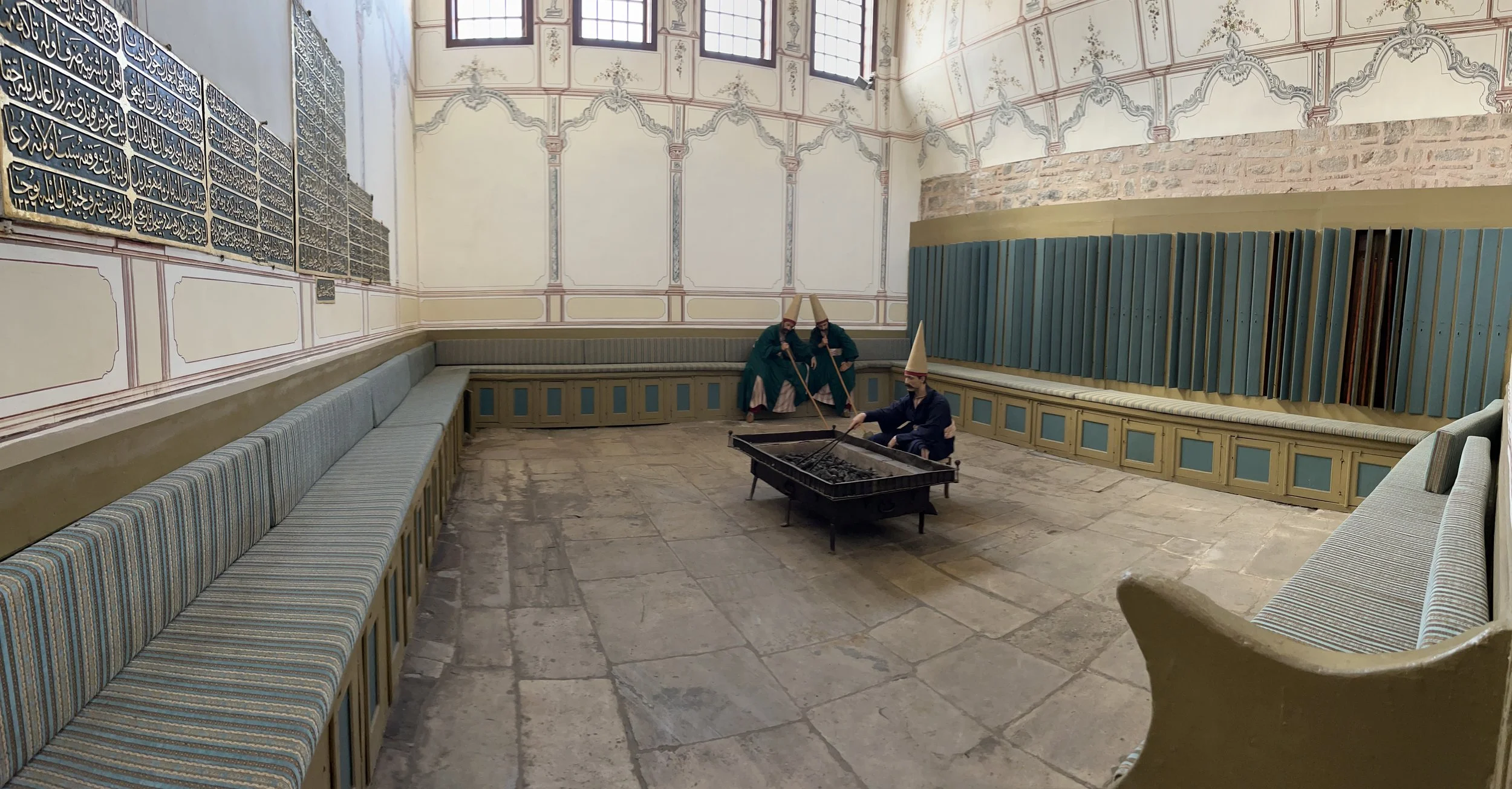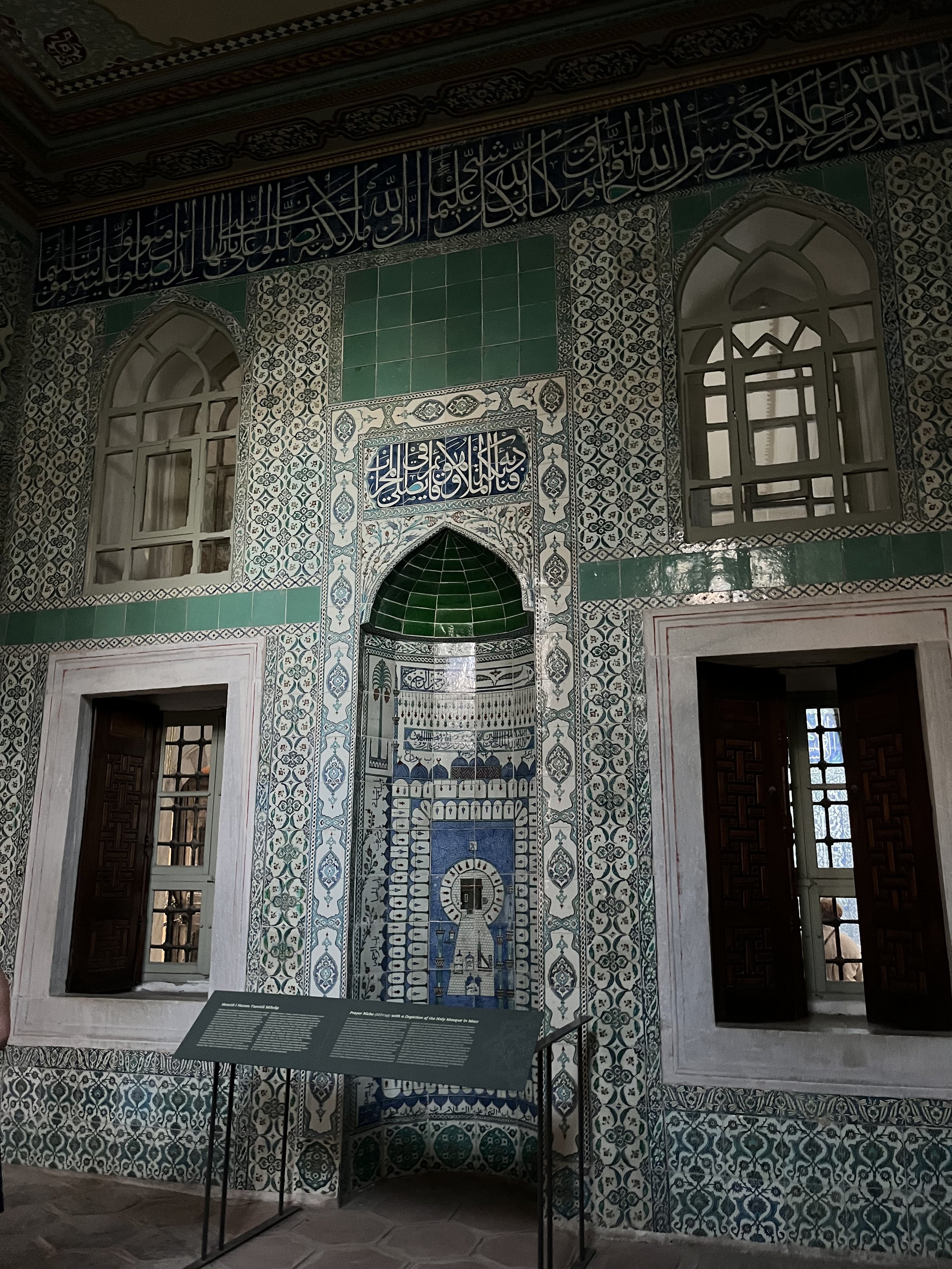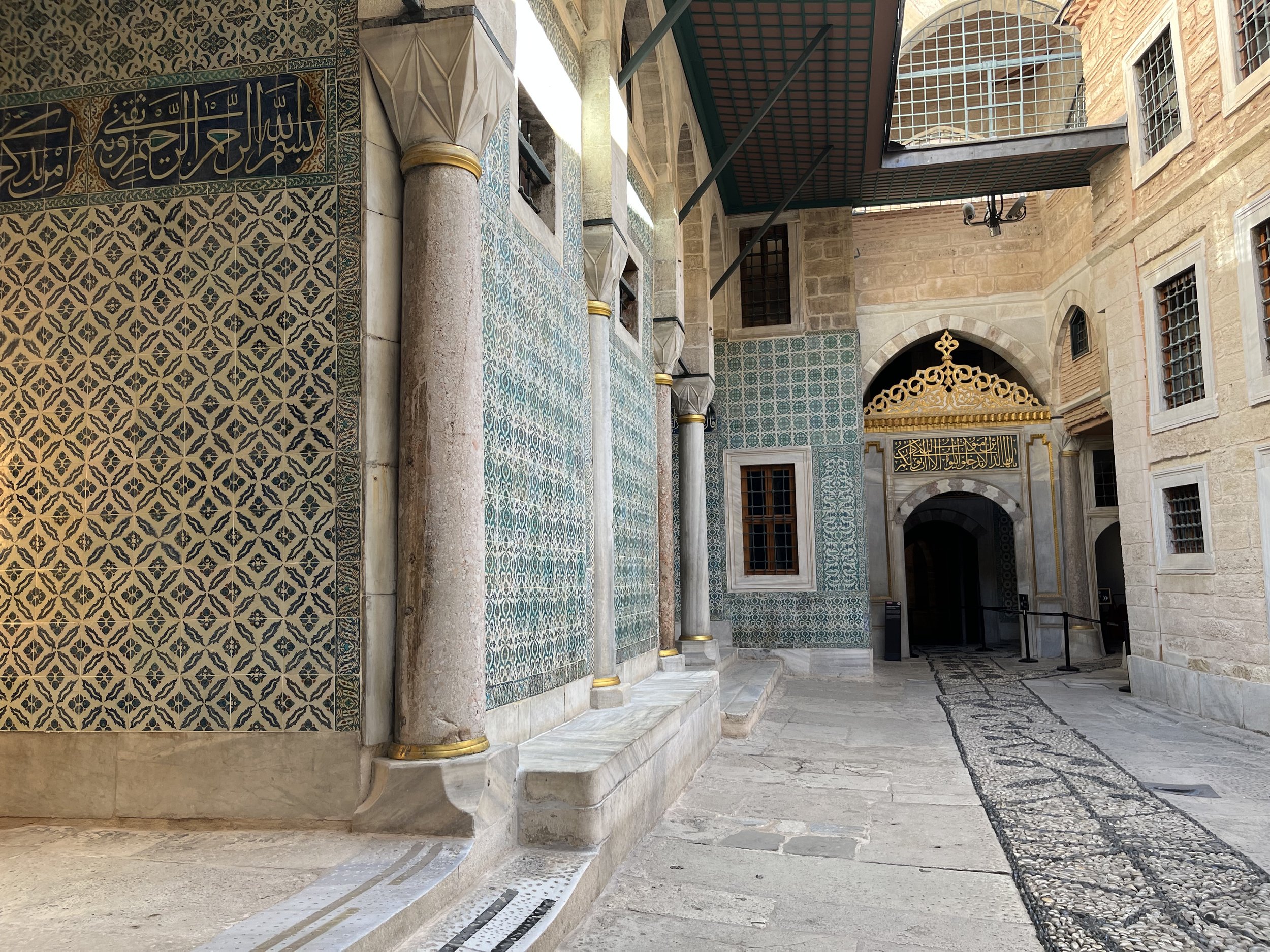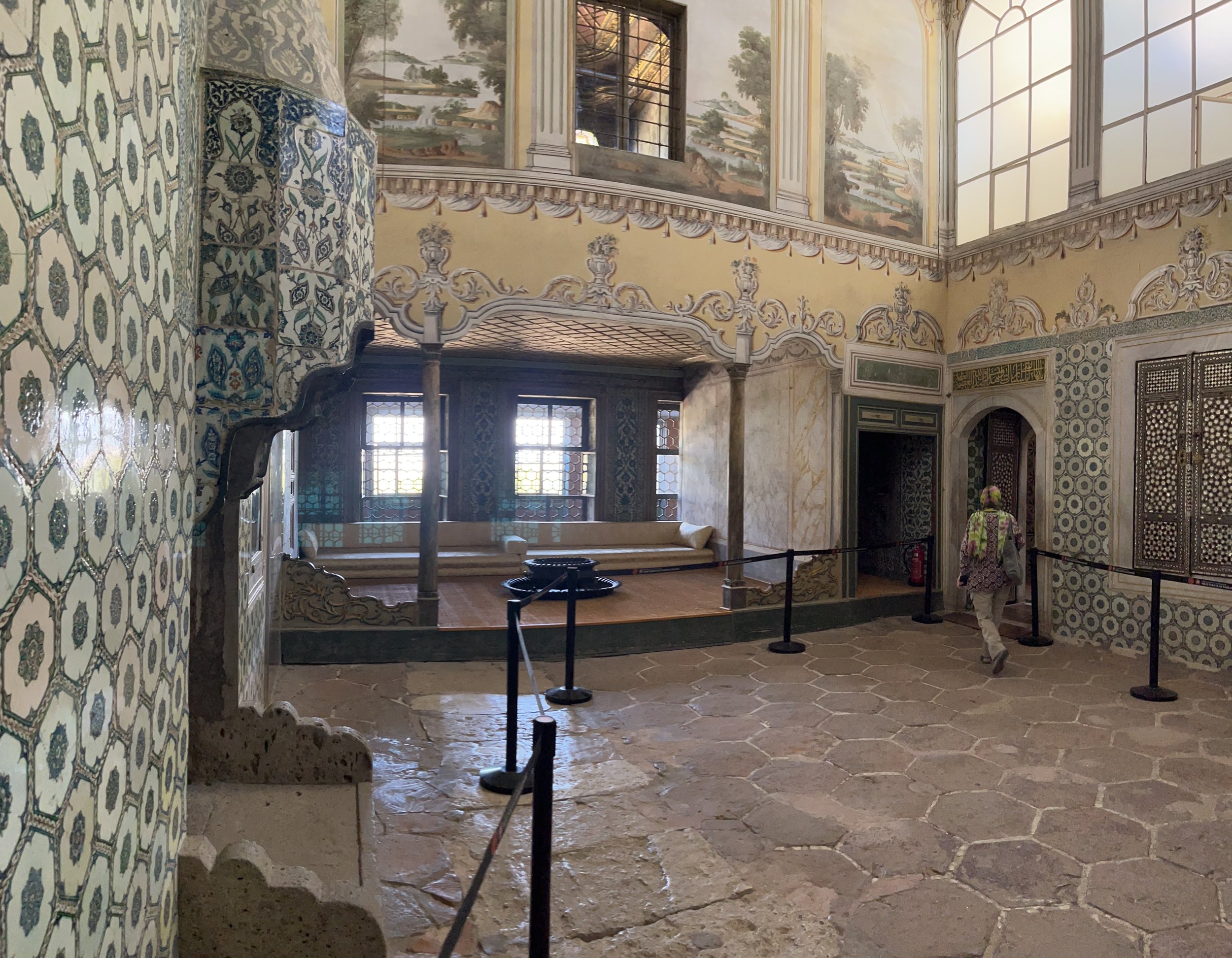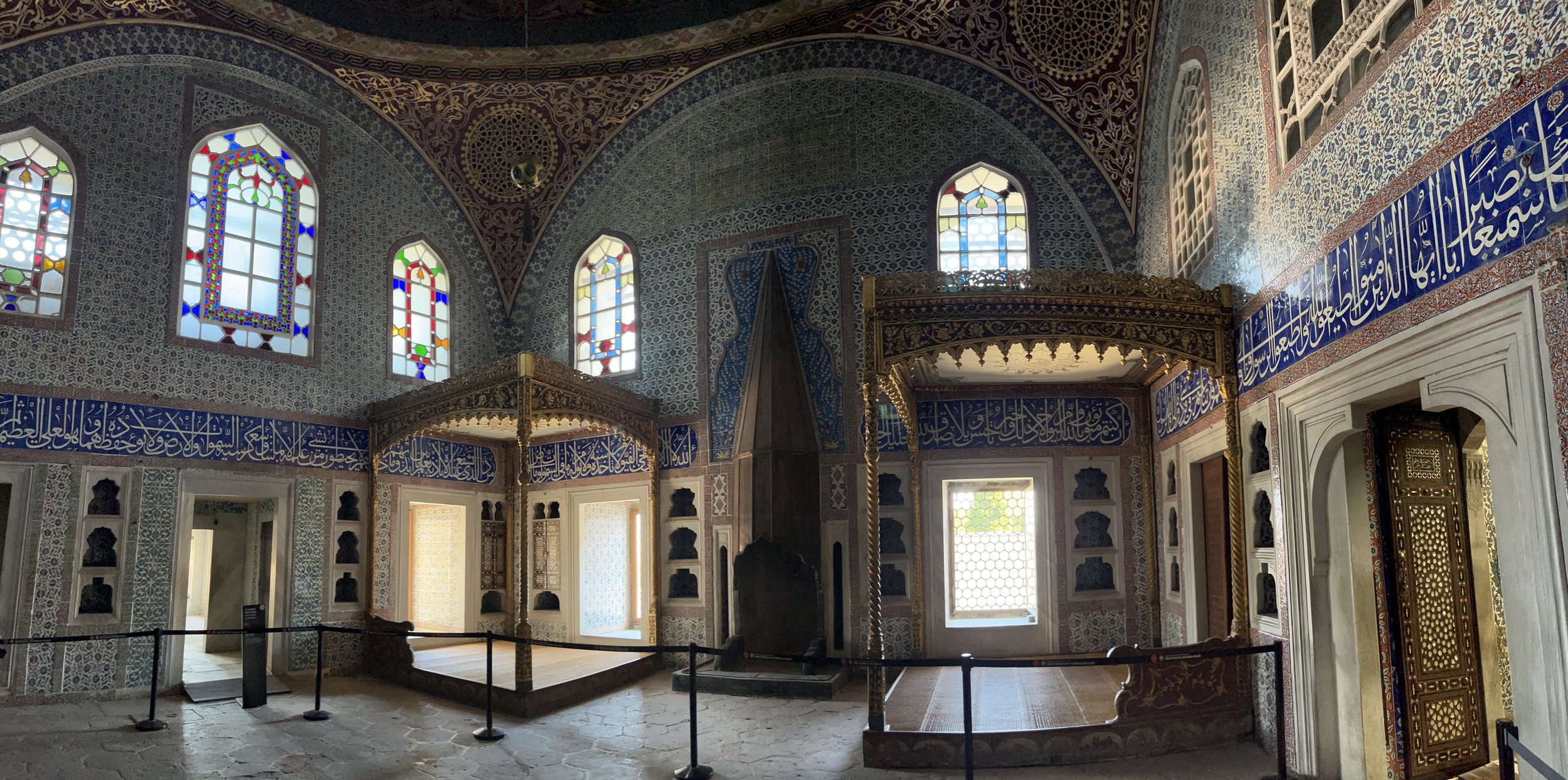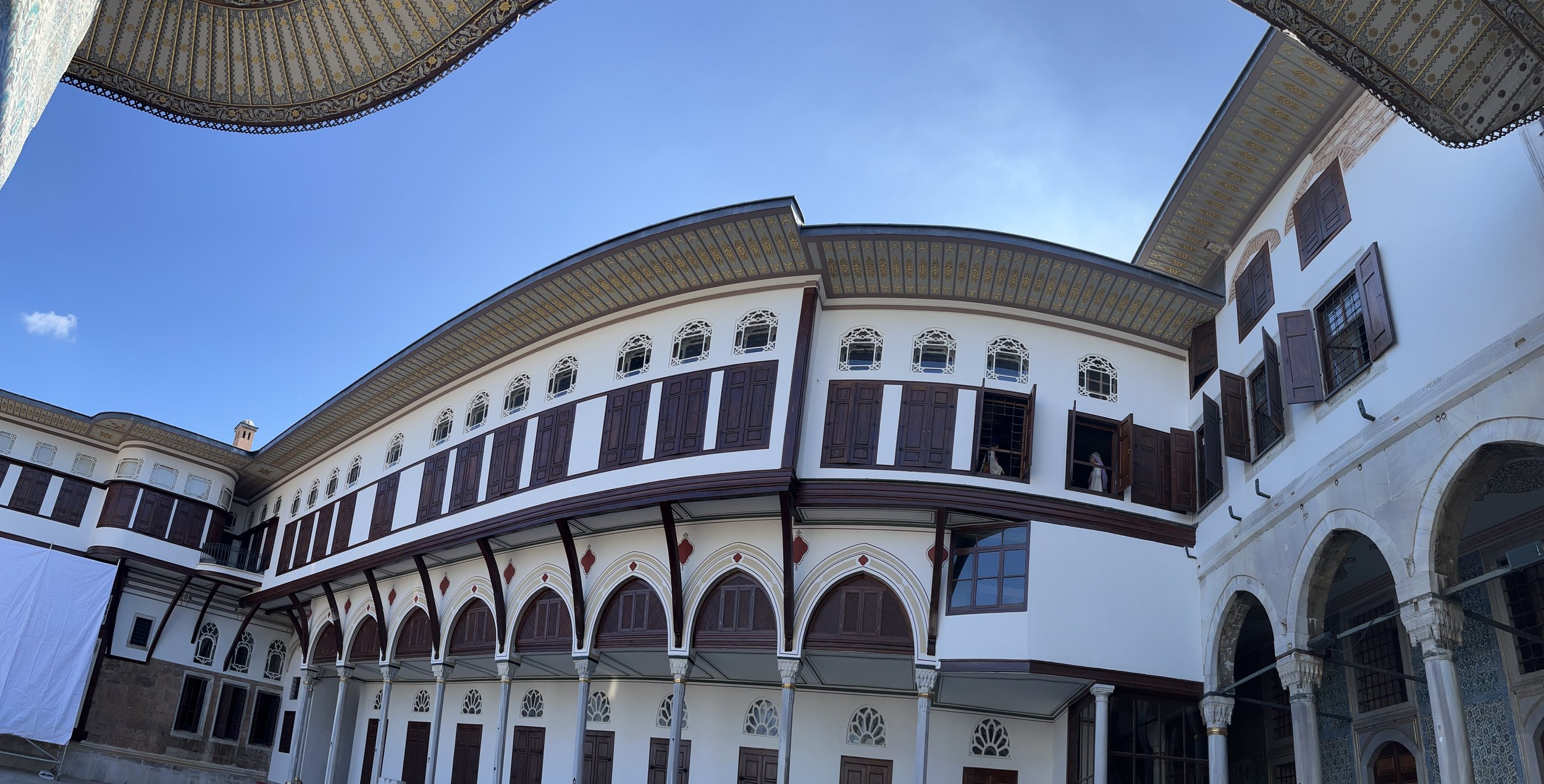Vacation Part 4- The Palace
The second morning in Istanbul was mostly a “do-over” of the previous day, except we had to pack up and check out. After an early breakfast, we left our bags with the desk and made our way up to the Topkapi Palace. Following the guide book’s recommendation, we plunged into the Sultan’s Harem before the crowds could build.
Waiting outside the gate to Topkapi Palace for opening time.
Quick history lesson: So, what the heck is the Harem thing all about? The Sultan of the Ottoman Empire maintained a household inside the palace that was the sacred sanctuary for the many, many women in his life. Forbidden to all others, the household, known as a Harem, included the Sultan’s mother, known as Queen Mother, his wives, and his concubines. Located in the center of the palace grounds, it was a big place, outfitted with the most luxurious furnishings the Sultan’s personal treasure could buy. It was served by slaves and guarded by the well known Black Eunuchs and a military company of Halberdiers. The functional purpose of the Harem was the production of male heirs, but it was also a point of political influence. The women who had the Sultan’s ear could influence decisions and policy as much as the governors and generals under his command. There was a heirarchy among the women, with the Queen Mother at the top, the Wives, ranked First, Second, Third and so on, then the Concubines, followed by female slaves. The “Favorites” got preferred apartments and status. Women entered the Harem as slaves captured in war, purchased in the slave trade, sent as gifts from other rulers, or even “recruited.”
The Sultan’s Harem included a late 1500s “pipe room” for the consumption of the latest luxury smokable products.
The mosque for the central African Black Eunuchs. The mihrab, or niche, depicts the center of Mecca.
Barracks for the the guards and eunuchs.
The courtyard of the the Black Eunuchs separated their facilities from the portal of the Harem. The path of round river stones was laid for the horses.
The courtyard of the Sultan’s Wives and Concubines. The doors on the right lead to individual apartments.
The apartment of the Sultan’s Mother.
Built in the late 1500s, The Sultan’s Mother had a state of the art bath with “modern” plumbing fixtures.
This toilet design is still quite common all across the “old world.”
The Sultan’s Reception Hall dating to 1585.
The Sultan’s Privy Chamber. Last updated in 1579.
Courtyard of the Favorites, wives and concubines that is, with apartments looking out on the city.
The senior women of the Harem had their own mosque.
On balance, the Harem is a dizzying array of luxury and complex tile work, but it wasn’t the only thing in the Palace.
In addition to his women, The Sultan maintained a treasury for his money, and the state’s money. The official buildings that housed these functions are now museum containing relics from the history of Islam and artifacts of the Ottoman Empire. On the far side of the Palace grounds were also warehouses and cook houses to supply and feed the servants and soldiers of the palace. They also produced bread for the poor, part of the alms giving required in Islam.
Cooking was a 24/7 effort in the palace.
This entire alleyway was dedicated to sustaining the palace.
Further in from the main gate and public courtyard, an inner court yard and buildings were designated for state business that was conducted by appointment only. Another subsection of the courtyard was the Sultan’s private area. This area contains the last building erected in Topkapi Palace. It is a Victorian era house the Sultan used when visiting Topkapi, as the Palace was no longer his main residence by the dawn of the 20th Century.
The inner gate separating the public and private areas inside the palace.
Built in the 1890s, The Sultan’s house isn’t a massive complex like the Harem, but it’s pretty posh.
The day’s history lesson ended by exiting through the public courtyard, opposite the mass of humans coming in the main gate. (The tour book was spot on.) With tired feet, we shuffled into a cafe near the Cold Fountain. It was a perfect spot to kill a couple hours until the car came to whisk us off to the cruise ship.
The public courtyard and the queue forming at the inner gate.
The shade of an olive tree, food, and comfortable chairs were ideal for people watching. Tour groups went by, led by guides with raised umbrellas or signs. Tourist in two and threes filled in the gaps between. Most entertaining were the social media driven kids. Pairs of young people would pose for each other’s camera in front of anything “interesting.” After watching it for a while, it isn’t a mystery why people get hurt, or worse, trying to get the right shot.
A tour group passing by a gate to the Hagia Sophia.
We watched a dozen social media kids stop at this gate for a photo.
When the time came, we wandered back to the Byzantium Hotel, collected our bags, and walked to the pick-up point at the end of the street. Our visit to Istanbul was over, but the trip was just getting started. We still had ten days on the ship and a couple bonus days in Athens to go.
The Azamara Quest wasn’t a big ship, but it was the right ship for us, and we couldn’t wait to get aboard.

